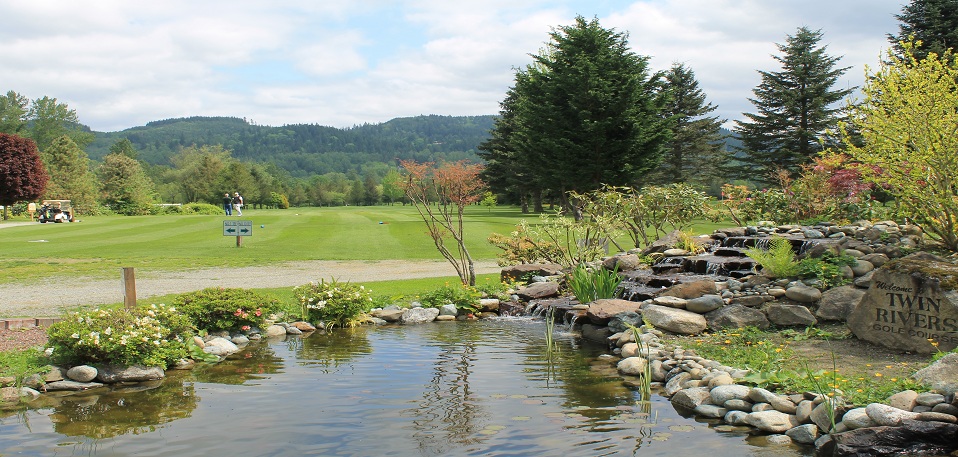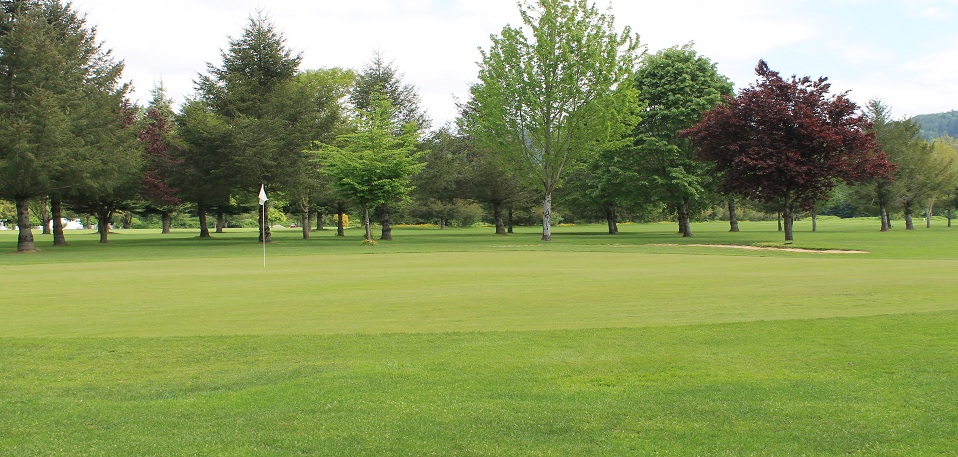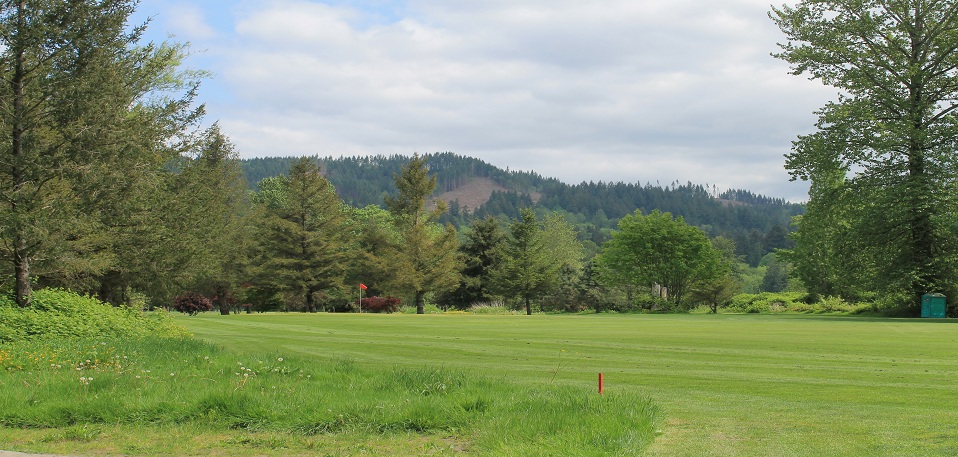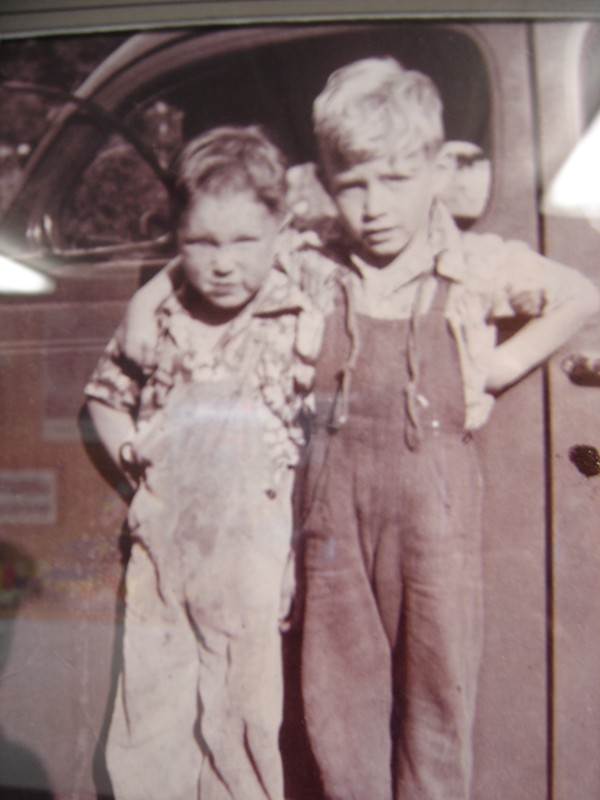Course History
Twin Rivers: Golf Course History
To view a "Picture Book History" of Twin Rivers Golf Course, click here!
WELCOME TO TWIN RIVERS GOLF COURSE, THE COURSE THAT SHOULDN’T BE, BUT IS ………
Meet Richard and Pat Rutledge, co-owners with Tom and Eleanor Rutledge, of Twin Rivers Golf Course, Fall City, Washington. Their story is one that warms the heart and inspires the spirit.
Some would have called it a mid-life crisis when Richard and Pat announced plans to sell everything they owned to build a golf course in an unknown corner of the Pacific Northwest. But they had decided to follow Richard’s dream, one first visualized and put to paper when Richard sat through high school study hall forty years earlier. While other kids diligently did their homework, Richard doodled, designing his concept of the ideal golf course, complete with streams, lakes, sand traps, all kinds of trees, and a friendly clubhouse where golfers could relax after a round. A teenager who knew how to dream big, Richard planned to build his golf course… someday.
But, as happens with so many of us, someday kept moving further and further into the future. Richard’s responsibilities, such as marriage, children, and a full-time job as a master sign maker, swallowed his money and time—but never his dream. He kept his dream alive and safely tucked in the recesses of his mind and heart, occasionally revisiting it over the years to redesign, refine, and enhance his drawings—moving trees and streams, mapping out fairways, strategically placing hazards, and placing greens just where he wanted them.
That Richard came to love the game of golf is a story in itself. Richard grew up in a working class family, one that viewed golf as neither a worthwhile nor intelligent way to spend one’s time or money. Richard himself could see that paying to hit and then chase a little white ball just didn’t make sense. But as often happens, fate—or in Richard’s case, three high school friends—stepped in. Although Richard told his buddies he thought golf was a stupid game, they talked him into playing it—just once. Richard couldn’t see the appeal of or the challenge to hitting a ball on manicured grass. Still, he accepted the challenge; he’d show his friends that golf was a no-brainer sport, an easy win.
Easy never came. All three guys beat him and beat him bad that first day, a blow to Richard’s sixteen-year-old ego. He couldn’t believe how badly he’d played, and he refused to accept defeat without a chance to even the score. He’d show them. He’d beat those guys at their own game. All he needed to do was practice, practice, and practice some more.
Richard’s competitive spirit turned learning golf into his mission in life. And true to his word, within a year, he had become such a good golfer, he left his three friends in the sand trap, so to speak. But a funny thing had happened on the way to the golf course: Richard’s mission to beat his friends evolved into a passion for the game. He was hooked.
Richard’s enthusiasm for golf became a part of him. It consumed his every waking hour, and he got so good at it that at seventeen he won the Seattle Caddie Championship at West Seattle Golf Course. The following year, at just eighteen, Richard would join two other players in holding the Juanita Golf Course’s Executive Course record of 29 on a par 32 for nine holes—a remarkable feat considering the golf pro, his pal, focused his attention on coaching Joann Gunderson Carner, now in the L.P.G.A. Hall of Fame, leaving Richard to figure out the mental game on his own.
Richard continued to collect trophies and perfect his game. Then, in 1957, marriage and, subsequently, four children dominated his life. Out of necessity, golf dropped off his radar; as a family man, he had other priorities. Over the next seventeen years, Richard would seldom play, but on those occasions he did, he played well—a reminder that he still had the skill and a consuming passion for the game.
In the mid-1970s, Richard renewed an old friendship with a fellow golfer and owner of the Mt. Si Golf Course, Gary Barter. Their friendship and Gary’s mentoring would prove to be instrumental in encouraging Richard to pursue his teen-age dream to build the perfect golf course. In addition to Gary, two other golfing friends and course owners spent countless hours with Richard, sharing their invaluable insights on golf course ownership and management. He knew that if the chance ever arose to build his course, he wouldn’t go into it blind. Having such knowledgeable, good friends would serve him well in the pursuit of his dream.
Then, in 1988, the chance did present itself. A golfing trip to Scotland with three pals who were course owners became a life-altering event for Richard and his wife, Pat. On that trip, the golfers talked about the business of golf nonstop, once again firing up Richard’s desire to build his own course. Richard’s friends encouraged him to retrieve his dream from where it lay hidden in his heart and place it back on top of his list of priorities.
Richard made a commitment to his friends to find a way to make it work. He assured them that when he returned to Seattle, he would find the land and the financial support to build the course he had envisioned forty years before. No more daydreaming and doodling. This time, he’d design his course for real.
Richard did exactly what he’d promised he’d do. He recruited financial backers: his brother and his sister-in-law, Tom and Eleanor, as well as a friend who believed in the dream. Next, he found a site and reworked his designs to fit the land.
And then…he initiated the permit process with King County.
Richard knew this would be the most costly and time-consuming part of the process. But thanks to the backing he’d gotten—and the fact that he and Pat had sold everything they owned—he felt he could stick it out for as long as a year.
Richard dedicated his every waking hour to the permit process and the construction details. If he wasn’t making lists, he was walking every inch of the land, visualizing the building process, dreaming of the cars in the parking lot to be, or meeting with lawyers and King County officials, the deal-makers or deal-breakers, about such technicalities as the seemingly endless number of studies and documentation dictated by law.
As year one neared a close, the county still had not made a determination as to the status of the permits. At this point, Tom had to tell Richard they were tapped out. Being retired, they couldn’t afford to risk whatever they had left. At the same time, Richard’s friend and the only other investor told Richard he had to get out too. Richard promised him he’d recover his investment after the golf course was open for business.
Richard understood. Who knew it would take so long to get permits? But, given this news, Tom reconsidered. Not wanting to see Richard and Pat go it alone, he committed to go the distance, risking all.
And so the cycle continued. More studies were required and more documentation. And more problems were cited. More checks had to be written to keep the process moving. More lawyers needed to be paid to manage the process with the county. Monies that were allocated to construction and start-up were reallocated to the county’s permit process and whatever it took to keep that process moving. Not only did year one pass with no permits and no denials, but so did year two and year three. What began as a dream fueled by unbridled enthusiasm and a love of the game slowly evolved into a financial and emotional nightmare for Richard and Pat and Tom and Eleanor.
Depression, anger, resentment, and fear surrounded Richard like a thick, black fog. He and his family had gambled and, it appeared, would lose it all, and Richard began to doubt if they could survive the permit process, much less recover the investment he and his brother had made. Pat, the eternal optimist, persisted in believing that, although they had lost so much, somehow they’d recover. She prayed daily that the county would not turn them down; she kept a glimmer of hope to sustain her and cope. During these trying times, her unrelenting faith kept Richard hoping for the best as well.
But, as time went on and nothing was decided, Richard’s depression deepened, frightening both him and Pat. They were in debt. His dream had spiraled into disaster, taking his brother and sister-in-law down with them. Richard asked himself some hard questions: Why had he waited so many years to pull out? Was he stupid or just plain stubborn? Time went on, and over and over he’d ask himself these questions. One day, he decided it was over. He was tapped out. But, before he bailed, he wanted to tell the county officials just what he and Pat and Tom had been through. He’d tell them how the unrelenting delays would destroy all of them—not just financially, but emotionally.
He wanted to explain the toll almost four years of begging had taken not only on his own soul, but on the souls of the people he loved. He wanted them to know how he’d been struggling to keep it together. He would beg for a ruling, any ruling. Not knowing what they would do, or when they would do it, was killing him.
Seated around the table were all the decision makers for the permit process. Unbelievably, after three+ years, they had still more questions about the golf course site. Richard asked to speak before the meeting progressed. Knowing this was his moment, Richard stood up and told them what he’d promised himself he would say. And tell them he did. Miraculously, they listened. What they heard was a man who spoke from his heart.
Richard told them of the delays, the costs, the delays and indecision that had crippled his family. The room remained eerily silent as he made his case. After he had said everything he had to say, Richard thanked them for listening. Then he turned and left, firmly believing he had screwed up royally this time.
But, again he was wrong. Within three months, the needed permits were issued. The two couples couldn’t believe their good fortune. Richard hadn’t screwed up after all. Ecstatic, they began the building of the golf course. Every day, all day and into the night, Richard, with Tom’s help, laid water and drain pipes, built tees, contoured greens, graded fairways, planted trees, mowed fairways, picked up leaves, watched for disease as tiny blades of grass emerged, and solved a host of problems. Hard work it was, but it was a labor of love. Richard was finally right where he belonged, covered in dirt, down on his hands and knees, bringing his dream to life.
That dream became a reality: Twin Rivers Golf Course.
We invite you to enjoy the miracle that almost wasn’t. Be inspired as you play, knowing this course had its conception at Issaquah High School in 1952 and its delivery in Fall City on Memorial Day weekend in 1994.
And on that memorable day, as the Rutledges so proudly watched golfers roll their carts onto the first tee, a spectacular rainbow arced its way across the entire course, a sign that this was meant to be.
What’s forty years, give or take, when you can look over your shoulder and see a throng of golfers living and enjoying your dream?
In closing, I challenge you to come and play our miracle.
To view a "Picture Book History" of Twin Rivers Golf Course, click here!




